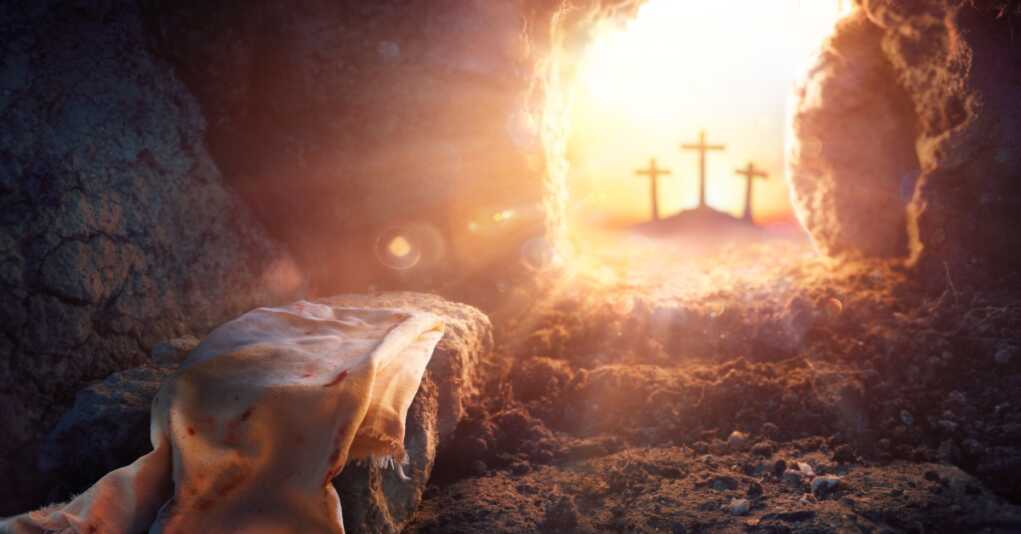New Research Suggests the Holy Shroud is Real

The Shroud of Turin, also called the Holy Shroud, bears a faint image of a bearded man, which many believe shows Jesus’ body miraculously marked onto the fabric. When it was first shown in the 1350s, people claimed that it was the real cloth used to wrap Jesus’ body after he was crucified.
French knight Geoffroi de Charny gave the cloth to the dean of a church in Lirey, France. Since 1578, it has been kept in the royal chapel of the Cathedral of San Giovanni Battista in Turin, Italy.
The burial cloth has fascinated historians, church leaders, skeptics, and Catholics ever since.
Matthew 27:59-60 says that Joseph wrapped Jesus’ body in a new linen cloth. He placed Jesus in a new tomb he had carved out of rock, then rolled a big stone in front of the entrance to seal it. After that, he left.
The cloth shows faint, brownish images on both sides of a thin man with deep-set eyes about 5 feet 7 inches to 6 feet tall.
The marks on the body match the wounds from Jesus’ crucifixion described in the Bible, like thorn marks on the head, cuts on the back, and bruises on the shoulders.
Historians believe the cross Jesus carried was about 300 pounds, which would have caused bruises. The Bible says Jesus was whipped, matching the cuts on the back, and a crown of thorns was placed on his head before the crucifixion.
Research from the 1980s suggested that the Shroud of Turin wasn’t authentic because it was dated to the Middle Ages, which was hundreds of years after Jesus’ death.
In 1988, researchers worldwide tested a small piece of the shroud using carbon dating. This method measures how a radioactive form of carbon (14C) breaks down to determine the age of objects containing carbon.
The researchers found that the cloth was made between 1260 and 1390 AD.
But now, Italian researchers have used a new X-ray technique to test the material and confirmed that it was made around the time of Jesus, about 2,000 years ago. They say that since the timelines match up, it makes the idea that the faint, bloodstained pattern of a man with his arms crossed on the cloth was left by Jesus’ dead body more believable.
For the new study, scientists at Italy’s Institute of Crystallography used wide-angle X-ray scattering (WAXS).
This technique measures how flax fibers naturally age and turns that into a time estimate for when the fabric was made.
The scientists examined eight small samples from the Shroud of Turin using X-rays to see tiny details of the linen’s structure and cellulose patterns.
Cellulose is the fabric’s main ingredient. It is made up of long chains of sugar molecules that break down over time. By examining how much cellulose has broken down, scientists could estimate the cloth’s age. They used factors like temperature and humidity, which affect cellulose breakdown, to help date the shroud.
The team found that the Shroud of Turin was probably kept at around 72.5 degrees Fahrenheit and 55 percent humidity for about 1,300 years before it arrived in Europe. They compared how much the cellulose in the shroud had broken down to other ancient linens from Israel that date back to the first century.
The team also compared samples of linens made between 1260 and 1390 AD, but none matched the Shroud of Turin.
Lead author Dr. Liberato De Caro said that the 1988 test should be considered incorrect because fabric samples often get contaminated, and this contamination can’t always be removed. He also mentioned that if the sample isn’t cleaned correctly, carbon-14 dating won’t be accurate.
Some experts now believe the linen’s authenticity is no longer in question. They say it was made from flax grown in the Middle East at the time of Jesus’ death and shows a crown of thorns on the man’s face.
Over 170 academic papers have been published about the mysterious linen since the 1980s, many of them concluding that it is real.
Tests from the 1970s tried to determine whether the images were created by painting, burning, or other methods, but none of these methods could be confirmed.
In 2017, the Institute of Crystallography said they found proof that the shroud had the blood of someone who was tortured. They identified substances like creatinine and ferritin, which are usually found in people who have suffered severe injuries. These findings went against the idea that Jesus’ face was painted on the shroud by medieval forgers.
While it’s unlikely the mystery will ever be solved, the Shroud of Turin remains the most important religious relic ever found. Now, it seems just a little more likely it is the real deal.

